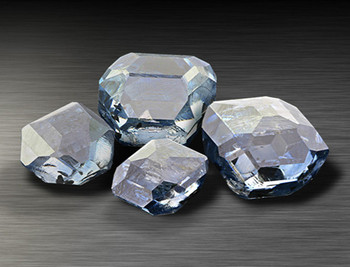
Man-made diamonds are a great alternative to the natural ones. The reason for this is because they look a lot like the natural diamonds and cost about 20 to 40 percent less than the mined ones. It is also good to note that these diamonds are more ethical. All in all, you should not confuse the lab-made diamonds with the simulated gems. The whole purpose of this post is to take a quick look at the important information you need to understand about the lab-made rocks.
Natural diamonds are formed deep inside the earth; about 100 miles deep. They have a crystal structure and are made of carbon under very high temperatures and pressure. What is more amazing is the fact that these natural rocks are billions of years old. Man has, however, found a way of creating synthetic versions of these rocks within a very short period of time.
Lab-made diamonds
The synthetic counterparts of diamonds are usually created in a laboratory. In their creation, high temperatures and pressure is still used to mimic the conditions that are present in the formation of natural diamonds. At the end of it all, the lab-created diamonds are visually and chemically indistinguishable from the natural ones. Without specialized equipment, even the jewelers will not be able to spot the difference. It is, however, important to note that some colors not found in natural diamonds can be created in the lab-made rocks.
The lab-made diamonds are also referred to as:
- Man-made diamonds
- Lab-grown diamonds
- Cultivated diamonds
- Created diamonds
- Cultured diamonds
Are lab-made diamonds fake?
This is a common question that people ask when considering synthetic diamonds. The first thing you need to understand is that these diamonds are real only that they are created in a lab. As aforementioned, it is very hard to distinguish the natural diamonds from the man-made ones. The have the same chemical composition as well as physical properties as the natural ones. With that being said, the lab-grown diamonds are not fake.
However, you need to be wary of the simulated diamonds. These are materials meant to simulate the natural diamonds. They are created in the lab but don’t use the same materials as the synthetic or natural diamonds. These diamonds only look like the real ones but they have a different chemical structure and different physical properties. Cubic zirconia is a common example of a diamond stimulant.
Key differences between synthetic and natural diamonds
As seen earlier, with the right equipment, a jeweler can distinguish the lab-grown diamonds from the natural ones. How is that possible if the two look the same? The truth is that the lab-made rocks do differ slightly from the natural ones. The main difference is the clarity of the stones. The natural diamonds have some internal flaws which occur during the formation of the rock. Synthetic rocks, on the other hand, are cleaner. This is because they are created in controlled processes.
The main reason why going for the lab-made diamonds makes more sense is because they are cheaper. What is more is that with the lab-made rocks, you can get a flawless diamond. The decision on whether to go for the natural or synthetic rock will depend on your finances and preferences.
